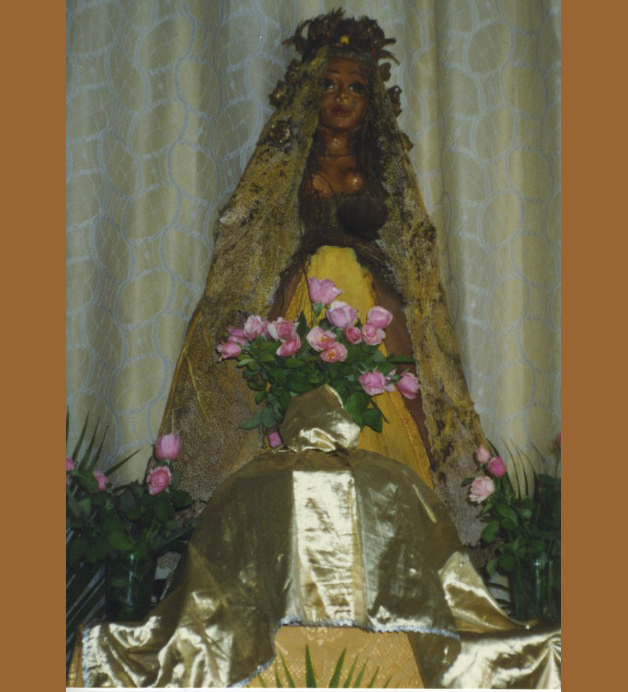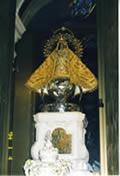
| |
Virgin of Charity as Ochun, Santería, Casa del Caribe, Santiago de Cuba, 1997.

Christian image of the Virgin of Charity in her altar, Sanctuary of El Cobre, 1997.
|
|
 |
< 2 >
This is an unusual iconographic depiction of the Afro-Cuban Santeria deity (orisha) Ochún which is usually simply portrayed as the Virgin of Charity. In emphasizing the autonomy of the Afro-Cuban tradition from the Christian one, the Ochún image here discards the child, the cross and the halo that are intrinsic to the Christian Marian image and symbology. Although both images are dressed in yellow, the emblematic color of Ochún, and wear a mantle, the Afro-Cuban image's breasts are bare while the Christian image is fully covered. Ochún's sensuality and erotic character contrasts with the chaste and maternal qualities of her Christian counterpart. The image is larger than the small image of the Virgin in El Cobre and is clearly racially portrayed as a mulatta.
Ochún constitutes a particular construction of feminity in the Afro-Cuban imaginary. According to the ethnologist Lydia Cabrera, Ochún is said to be the "owner" of love and a lover of luxuries such as silks, jewelry and perfumes. She presides over river waters and she owns copper, coral and amber. She embodies unabashed sensuality, sexual desire, and the pleasure principle. She loves music and dance. Her disarming beauty, charm and amiability, often characterized as "Ochún's honey," are considered major ingredients of her power. In her mythical repertoire she has several husbands and lovers.
Like other orishas, however, Ochún has multiple, sometimes contradictory, facets and, in fact, fluid identities. In this sense she can be said to be "postmodern" avant la lettre. She is jovial and loves to party, she nurses the sick and generously grants children to unfertile women. Or she is a siren and lives in the river, she is homely and a "respectable" lady of her house, she does not dance, she weaves and embroiders. She can also be associated with cementeries, the dead, filth and abjection. The figure of Ochún is the product of a cultural and religious imaginary very different from the Christian theology that informs Marian devotions and its femenine ideals.
OF RELATED INTEREST
Ochun dance steps (video)
Ochun dance performance (video)
Afro-Cuban group dance performance (video)
"From the Deep: A Diva" (NYT Art Review:2009)
|
